[JB-Pardon the technical problems in fully displaying the content of this article.]
CNN
Deyan Sudjic is director of London's Design Museum. This is an edited excerpt from "Imagine Moscow: Architecture, Propaganda, Revolution," the book accompanying a new exhibition at the museum.
(CNN)When you look at Europe's capital cities, you see, spelled out in physical form, the nature of the ideas that brought them into being.
Today's London is the fruit of unintended consequences. Its skyline is dictated by a market economy, distorted by the demands placed on it by politicians who have tried to shift the provision of civic amenities onto private finance.
Paris has a historic center built for Napoleon III by Baron Haussmann in an attempt to create the image of an imperial capital, though not successful enough to discourage the Paris Commune or the Prussian invasion of 1870.
Moscow has different roots. With the Kremlin at its heart, it still has a structure bequeathed by a medieval autocracy. Since 1917 it was the subject of a concerted effort to make it the capital not just of Russia or of the Soviet Union, but of a new world order. A capital shaped not by the market, but by an idea of what a city could be.
Abandoning tradition
When the Alekseyevsky convent was built on a water meadow just outside the Kremlin wall in 1347, Moscow was a city still being fought over by Poles, Lithuanians and Russians. The city was just a couple of centuries old, and still had memories of being burned to the ground by the Tartars. Over seven centuries this particular site reveals the violent shifts in the nature of not just Moscow, but Russia too.
The remains of the convent were demolished to make way for the Cathedral of Christ the Savior, the largest Orthodox church in the world, paid for with the kopeks of Russian peasants dropped into collecting boxes all over Russia, as a celebration of national deliverance from Napoleon's troops.
Czar Alexander I had commissioned Aleksander Vitberg to design a cathedral of a scale and grandeur that would reflect Russia's ambition to be seen as a mighty and expansive state. With a dome more than 750 feet high, it would have been twice the size of the Vatican. But there were doubts about its feasibility.
After Vitberg was accused of embezzlement and exiled to Siberia, Alexander's successor, Nikolas I, handed the project over to another architect, Konstantin Ton, who redesigned it in a more traditional Russian style, and on a more modest scale.
Nevertheless, at 360 feet to the top of the cross on its biggest dome, it was still as tall as London's St Paul's. When it was finally completed, Tchaikovsky wrote the 1812 overture in celebration.
A taper lit at one of its altars was believed to bring good fortune, provided that you could get it home without it blowing out. Easter services attracted thousands of worshipers to the vast white marble structure.
Stalin dynamited the church in 1931. He was determined to recast the center of Moscow, and he wanted the site for the Palace of the Soviets, the symbol of his regime.
A new vision
Under the supervision of Stalin's close political ally, Vyacheslav Molotov, a competition was organized to find a designer. The brief was to produce a "monumental structure outstanding in its architectural formulation," according to the May 1940 issue of The Architecture of the USSR.
Molotov's men searched the world for suitable candidates. Walter Gropius and Hans Polezig, competitors for the chance to build Hitler's Reichsbank just two years earlier, took part alongside Erich Mendelsohn, Auguste Perret, Le Corbusier, Naum Gabo and three Soviet architectural teams.
The eventual winner after several rounds was Boris Iofan, a well-connected architect from Ukraine, who was not yet forty.
After studying in Odessa, Ukraine, Iofan had spent ten years in Rome working in the studio of Armando Brasini, the man who became close to Mussolini and worked in Libya and on the replanning of Rome.
His design, guided by what he went on to describe as Stalin's genius would have been as tall as the Empire State Building, topped by a representation of Lenin, pointing at the Kremlin, that itself would have overshadowed the Statue of Liberty.
Together reaching 500 meters (1640 feet) high, the scale would have been without historical precedent.
Stalin asked the finalists to incorporate "the best of the past, with modern technology," per to the May 1940 issue of Architecture of the USSR. To this end, Iofan teamed up with officially approved architects Vladimir Shchuko and Vladimir Gelfreikh to build the project. But it was Iofan that Stalin chose to rebuild Moscow in his image.
Living in the House on the Embankment, the sprawling city within the city he had built himself to house the party elite, Iofan could have watched the dynamiting of the basilica from the window of his apartment. He might have looked on as ill-fated residents were marched away by the NKVD (known in English as The People's Commissariat for Internal Affairs) on many nights during the purges. The survivors would ask the doormen for the names of the disappeared.
Justifying the destruction of the basilica, Iofan claimed that the old church was "huge, and cumbersome, looking like a cake, or a samovar ... which (symbolized) the power and the taste of the lords of old Moscow."
Growing challenges
Those still brave enough to challenge Stalin's determination to destroy every trace protested angrily. Several priests who tried to salvage religious relics were summarily shot, while two technicians who refused to take part in dynamiting the remains of the hulk were sent to the gulags. Remembering the sacrifices of the Russian people in defeating an invader from Western Europe was off the agenda.
Having destroyed the Holy Savior, the leaders of the new Moscow started on building its replacement in 1935.
"Why is the podium raised so little above the hall?" Stalin demanded, according to Architecture of the USSR. "It must be higher. There must be no chandeliers, the illumination must come from indirect light."
The main hall was increased to a capacity of 21,000 seats, under a 380-foot high dome. It was ringed by six smaller halls, each thematically expressing a section of the six-part oath Stalin took when he succeeded Lenin, including the Stalin Constitution Hall, and the Hall of the Building of Socialism, as well as a Museum of World Revolution.
The tower was designed in classical fashion, in three related parts. The base was to represent the precursors of socialism, the shaft of the tower Marx and Engels; the whole was crowned, of course, by the vision of Lenin. The tips of his fingers, 20 feet long, would have been lost in cloud on many days.
The Soviet Union, however, did not have the skill to build the structure. Accounts of the troubled construction of the original basilica, which had been plagued by flooding caused by a high water table and pressure from the river, were ignored by Stalin's cowed experts.
Things seemed to go well at first. The foundations for the palace had been dug by the end of 1938 and work started on the steelwork. Clearing the entire site would have involved jacking up the Pushkin Museum, mounting it on huge rollers and moving it bodily out of the way, which the Politburo were fully prepared to do.
By 1939, the road closures necessary to prepare for moving the museum out of the way had been announced. But the site was getting increasingly waterlogged and nothing that Iofan tried would solve the problem. The retaining walls were tanked with tar and lined with tombstones, but neither stopped the water rising for long.
Many far more powerful men were executed as saboteurs for much less conspicuous failures, but Iofan evidently had a special rapport with Stalin that saved him from the gulag and the Lubyanka. He was left to build the Soviet pavilion at the New York World's Fair in 1939.
The process of building was as important for Stalin's purposes as the finished product. Moscow's shop windows in the 1930s and 1940s could offer little in the way of food, let alone consumer goods. But they were filled with images that depicted the Palace of the Soviets, in that distinctive dreamlike style favored during the Stalin years.
The dictator had himself portrayed as the fount of all this magnificence, its creative genius, infantilizing the Soviet Union in the process. The Architecture of the USSR May 1940 issue devoted twelve pages to Iofan, printing his picture next to the latest version of the Palace of the Soviets, with pages reproduced from his sketchbook showing watercolors of the Pantheon and the Roman amphitheater at Syracuse.
He was described as a master of Soviet architecture, and the piece documents the transformation of the conference hall from its original 1932 design to its final incarnation. In the first version, three concentric drums surround the dome. They sprout classical wings in the shape of twin crescents equipped with an endless procession of giant Corinthian columns flanking the entrance.
After that came the tower, and the ever more colossal statue of Lenin.
After Stalin
It was only the German invasion of 1941 that stopped work. The palace's structural steel, by this time reaching as high as the eleventh floor, was dismantled for war use; Iofan and his models were transferred to a new studio on the eastern side of the Urals.
After the war, Iofan returned to his apartment, and continued to work on the project, offering Stalin a number of options for its completion, none of which was adopted.
Instead, Stalin decided on another project to transform Moscow by building a ring of highrise towers that in their impact recalled some of the Constructivists' proposals from the 1920s, but used a very different architectural language, one that drew on Iofan's work for the Palace of the Soviets.
The project to build eight towers was announced in 1947. Moscow State University, designed by Lev Rudnev, is the largest. Along with the Hotel Ukraina, the Ministry of Foreign Affairs, the Leningradskaya Hotel and three other towers, it was completed by 1952.
After Stalin's death, Khrushchev was ready to denounce the crimes of his predecessor in a closed session of the Communist Party of the Soviet Union. He turned the remains of the palace into the largest swimming pool in the city, a perfect circle with a 100 meter (328 feet) diameter, presenting a less autocratic, more populist version of the Soviet system.
From his increasingly shabby apartment, Iofan could again have looked down on a demolition site. This time, though, the destruction was of the project for which he had surrendered his integrity to the dictator of the twentieth century with more blood on his hands than Hitler. Iofan died in 1979.
The Soviet Union had only another thirteen years left. In the last years of the Soviet Union, the pool closed and the water was drained. Even before the collapse of the old system, the state had given permission for a new church to be rebuilt on the site.
The first post-Soviet mayor of Moscow, Yuri Luzhkov, demolished the pool and began to build a replica of what Stalin had destroyed in one of the first and most conspicuous projects of his 18-year reign.
Moscow today
Emerging from Moscow's Kropotkinskaya metro station today, you pass the loafers drinking beer at the café table. You turn, and are confronted by a vision so dazzling that you can hardly see anything else. The five golden domes of the Basilica of Christ the Savior hurt the eyes, gleaming in the sun with a patina that seems to turn a vivid shade of turquoise.
A bronze relief frieze of figures runs around the exterior, charting Russian history. Warriors clutch their spears and bearded priests brandish the word of God, held aloft on metal tablets, like the digital cameras raised by supplicant tourists.
The basilica is protected by a metal fence and ringed by elaborate cast-iron lamp posts, stone balustrades, and endless sequences of steps. It sits on a band of putty-colored granite with a gray, rusticated stone base. Get closer and you discover that under the surface is a subterranean complex of ramps, roads and underground parking lots, all of which betray the whole gleaming confection as a faithful hallucination.
This is a replica of the church that Stalin destroyed. The bronze doors, sculptures, inscriptions, gaudy flower beds, lamp posts and carved stone are all the work of late twentieth century craftsmen. It is the kind of thing the people who make hyper realistic effigies for Jeff Koons would do if left to themselves.
The new church, like the memorial to Peter the Great across the river, is the product of the ex-mayor of Moscow, Yuri Luzhkov, and the sculptor Zurab Tsereteli. Boris Yeltsin himself laid the foundation stone, and lay inside the completed basilica when he died. It is the church in which the five members of Pussy Riot filmed their 40-second protest against the connections between the Orthodox church and Putin's regime.
Some years ago, I was given a tour Iofan's apartment in the House on the Embankment. From the bedroom window, I looked out to see the rebuilt domes of Christ the Savior. The room had been neglected for decades. A plastic shower curtain had been slung over boxes of the architect's papers, but it did little to protect them from the dust caused by the workmen attempting to modernize the kitchen.
There was a plaster maquette of the Lenin statue from the Palace of the Soviets under the desk. In one box I found sheaves of black-edged envelopes. I opened one to find that it contained a telegram from Stalin. Iofan's plea to have one of his assistants released from fighting the Germans so that he could join the evacuated architectural studio beyond the Urals had been granted.
There were ancient photo albums. Here was Iofan shaking hands with Frank Lloyd Wright as they tour the Soviet pavilion that he designed for the New York World's Fair of 1939, an incongruous tribute to the proletarian revolution in Queens.
The chaotic mess of books and papers, medals and ancient electrical appliances, felt like the residue of an entire system. Which is exactly what it was.
"Imagine Moscow: Architecture, Propaganda, Revolution" is on at the Design Museum in London from March 15 to June 4, 2017.














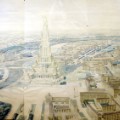
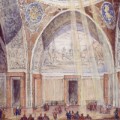
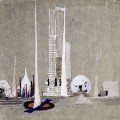
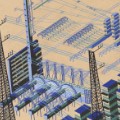
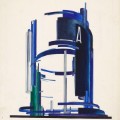
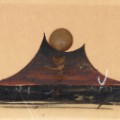
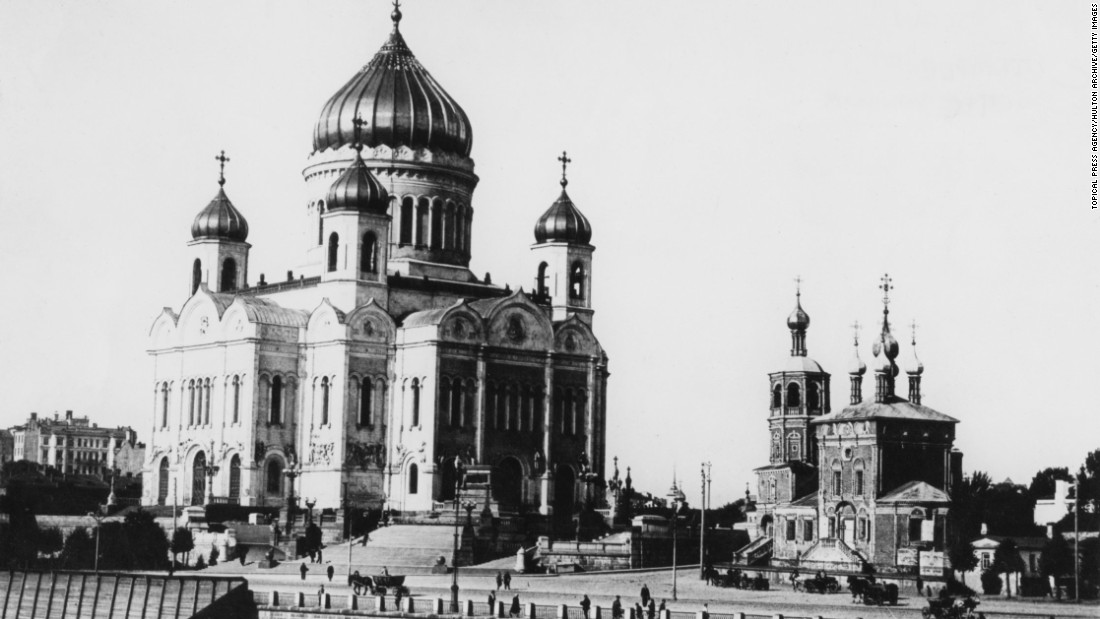





















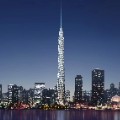

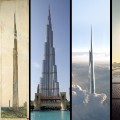
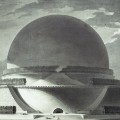
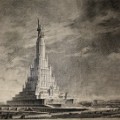

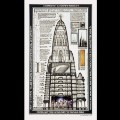
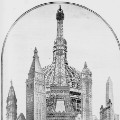
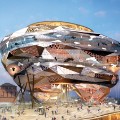
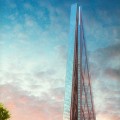
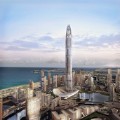
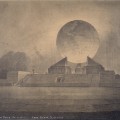













!["Typically, a metro station is a pedestrian place which serves as a utilitarian device to get you from one place to another. But these were extraordinarily built and constructed, [with] a whole architectural narrative built into them," Burdeny said.](http://i2.cdn.cnn.com/cnnnext/dam/assets/160316154848-moscow-metro-stations-david-burdeny-belorusskaya-small-169.jpg)





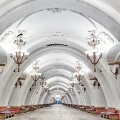
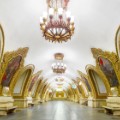
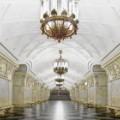
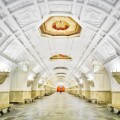
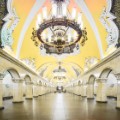
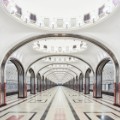
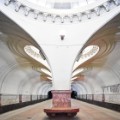
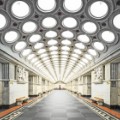
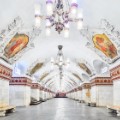
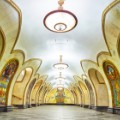
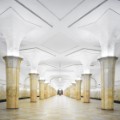
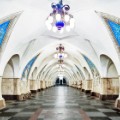

No comments:
Post a Comment